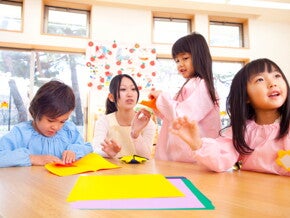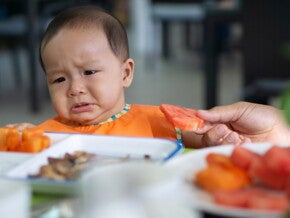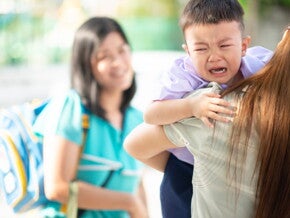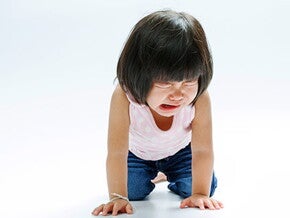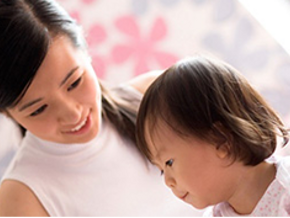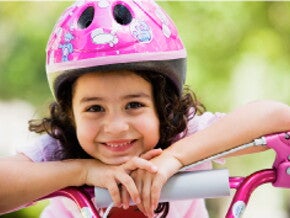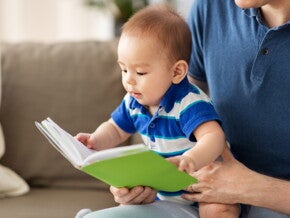
Physical Activities for Small Children – What you need to know
Did you know? Spending time playing with your child at this age can lead to him being more active when he’s a toddler.
Your child needs to be more active than you might think. Studies show that nine-month-old children who actively play with their parents have increased physical activity when they’re close to two years of age. It’s certainly never too early to get into the habit of incorporating active playtime into his everyday routine. Surprisingly, many parents think their children are naturally active and don’t need any extra encouragement. However, research reveals the opposite to be true, and many toddlers aren’t active for the recommended amount of time for their age. In several countries, there are activity guidelines for toddlers aged one to two years old. These guidelines recommend at least one to three hours of activity per day. Now that your child is a toddler, you can be aiming towards these levels of active time, as he approaches toddler age.
Experts advise that children engage in physical activities that explore movement and their environment for several short periods of time each day. Children should, of course, always be in a safe environment and supervised when playing.
Let these five principles guide how your child plays, to start him on the path toward an active and healthy life.
- Get moving. Encourage your child to be physically active several times a day in a variety of ways. You don’t need lots of equipment—simply playing together on the floor will get him moving.
- Spend less time sitting still. Try not to let your child sit in the same position, for example in a stroller, car seat, or high chair, for more than one hour at a time.
- Avoid screen time. Screen time is not recommended for children under two years old. Instead, enjoy limited quiet time by reading together or telling him a story.
- Stay hydrated. As your child may get thirsty during a play session, take a break and offer him a cup of water, and offer another one at the end of the activity. Be sure to let him see you enjoying a refreshing glass of water, too.
- Sleep well. For this age group, 12 to 15 hours of good-quality sleep per 24 hours, including naps, is recommended.
Sources
- Society of Health and Physical Educators (SHAPE). Active start: A statement of physical activity guidelines for children from birth to age 5. 2nd ed. Reston, VA: SHAPE America; 2009. Available at: https://www.shapeamerica.org/standards/guidelines/activestart.aspx (Accessed April 11 2018)
- Downing KL, Hnatiuk J, Hesketh HD. Prevalence of sedentary behavior in children under 2 years: A systematic review. Prev Med 2015; 78:105–14.
- Hesketh KD, Hinkley T, Campbell KJ. Children’s physical activity and screen time: qualitative comparisons of views of parents of infants and preschool children. Int J Behav Nutr Phys Act 2012; 9(152): 1-14.
- Hnatiuk J, Salmon J, Campbell K, et al. Early childhood predictors of toddlers’ physical activity: longitudinal findings from the Melbourne InFANT Program. Int J Behav Nutr Phys Act 2013; 10:1-9.
- Jones RA, Hinkley T, Okely AD, et al. Tracking physical activity and sedentary behavior in childhood. Am J Prev Med 2013; 44(6):651-8.
- Okely AD, Ghersi D, Hesketh KD, et al. A collaborative approach to adopting/adapting guidelines – The Australian 24-hour movement guidelines for the early years (birth to 5 years): an integration of physical activity, sedentary behavior, and sleep. BMC Public Health 2017; 17(Supple 5):869. doi: 10.1186/s12889-017-4867-6.
- Tremblay MS, Chaput J, Adamo KB, et al. Canadian 24-hour Movement Guidelines for the Early Years (0-4 years): An integration of physical activity, sedentary behaviour, and sleep. BMC Public Health 2017; 17(Suppl 5):874 doi 10.1186/s12889-017-4859-6.
- Wijtzes AI, Kooijman MN, Keifte-de Jong JC, et al. Correlates of physical activity in 2-year-old toddlers: The Generation R Study. J Pediatr 2013; 163(3):791-9.
Last revised: April, 2018














